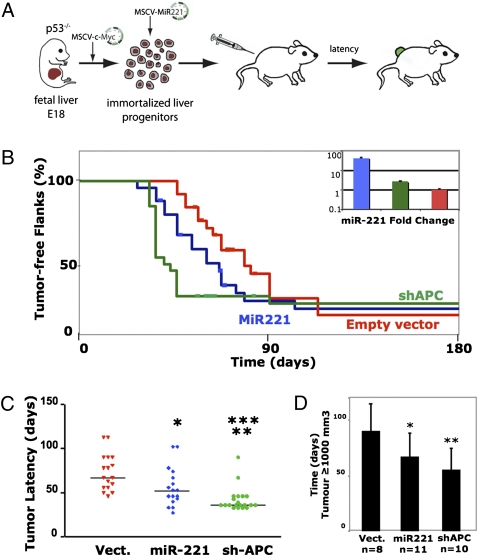Fig. 4.
miR-221 is protumorigenic in vivo. (A) Schematic representation of the transfer protocol using immortalized p53−/−;myc liver progenitors infected by MSCV-derived retroviruses. (B) Kaplan–Meier curves showing the percentage of tumor-free injected mouse flank. Mice were injected s.c. with p53−/−;myc hepatoblasts previously infected by retroviruses expressing miR-221 or sh-APC in the PIG-MSCV vector. Each group corresponds to 24 flanks/12 mice. Mice were monitored starting at 3 weeks after injection. The histogram corresponds to miR-221 expression levels as measured by qPCR in the three types of transduced liver progenitors. (C) Average latency for tumor appearance. Significant differences of tumor onset was observed between miR-221 and empty vector (*, P = 0.0142), sh-APC and empty vector (**, P < 1 10−4), and miR-221 and sh-APC (***, P = 0.0151). (D) Time required for tumor to reach 1,000 mm3. Values are mean ± SD. Each mouse was killed when tumor reached 1,000 mm3. Significant differences were observed between miR-221- and empty vector-infected cells (*, P < 0.05) and between sh-APC and empty vector (**, P < 0.005).

